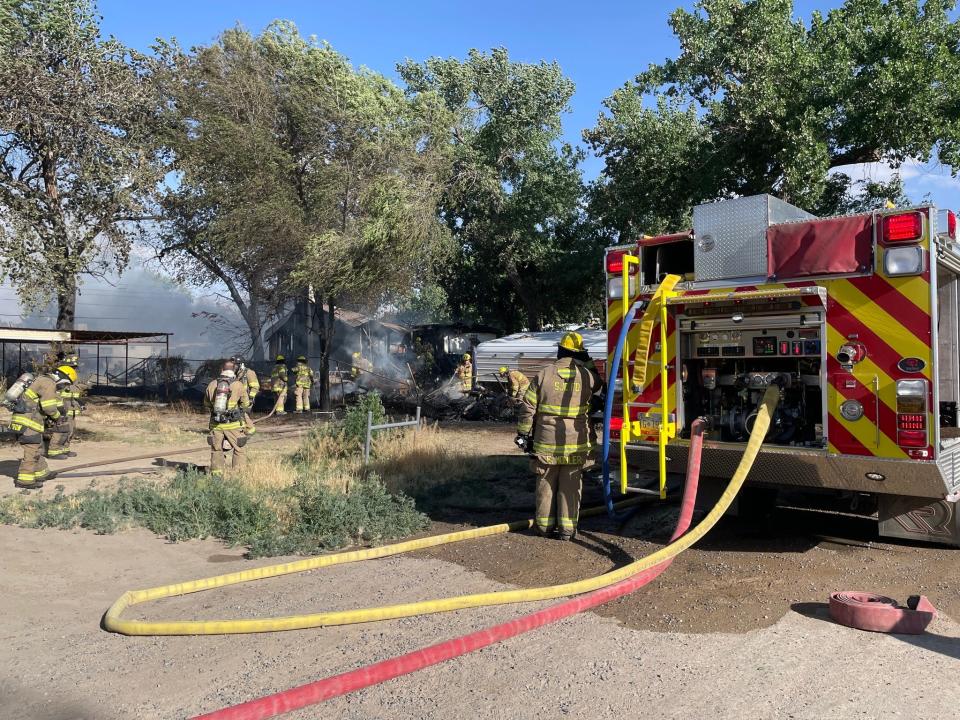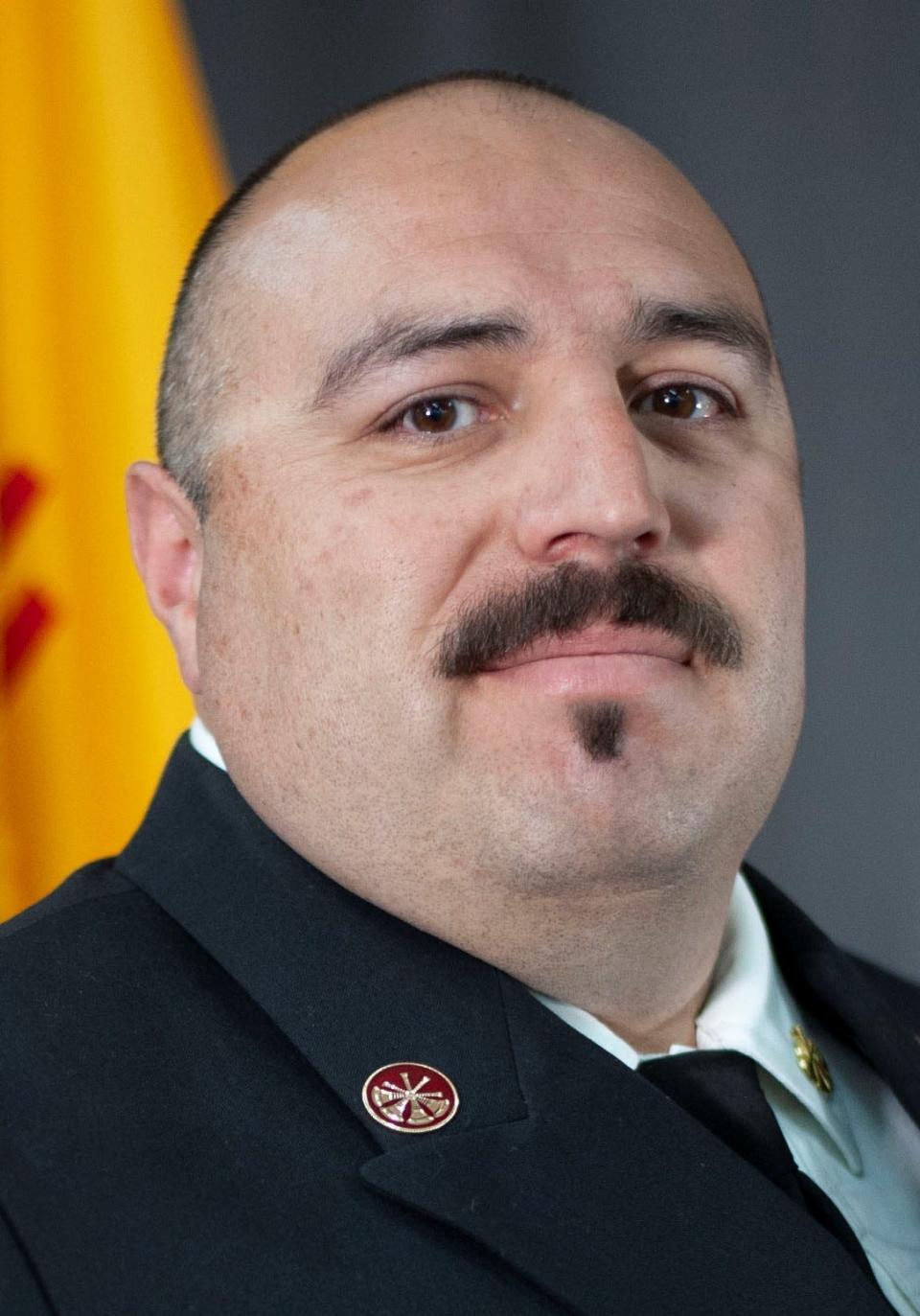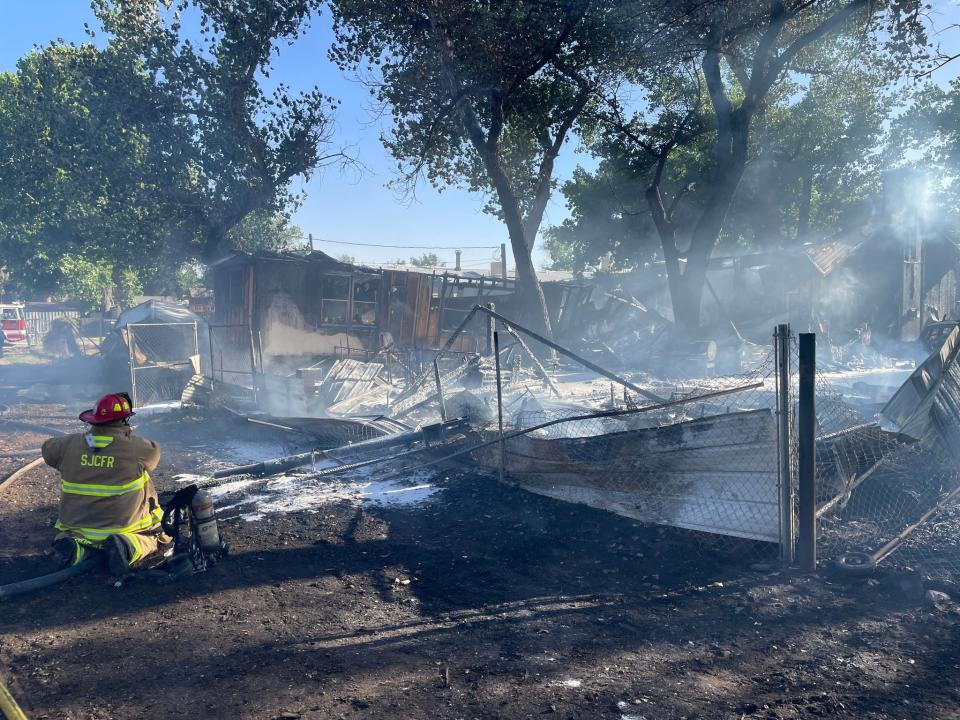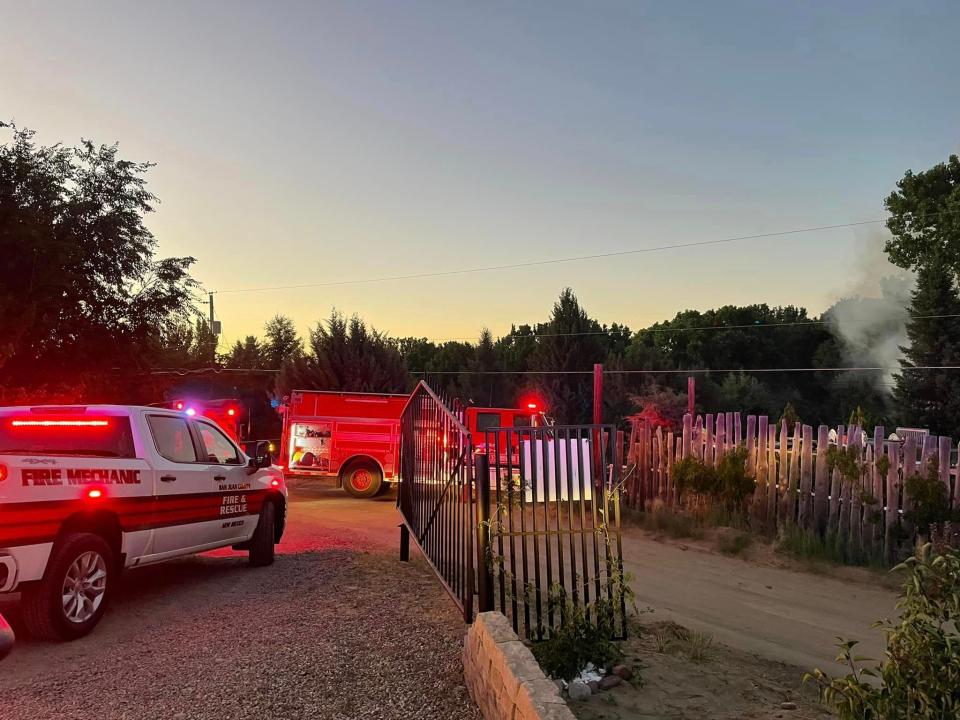Chief seeks commission's approval of restructuring of San Juan County Fire & Rescue
San Juan County Fire & Rescue could be in for a significant restructuring over the next few months if a plan presented by Chief David Vega to the County Commission on Tuesday is approved.
While presenting an annual report on the status of the department to commissioners, Vega focused largely on the agency’s manpower woes, which are in large part a product of a decline in the number of volunteer firefighters over the last seven years. San Juan County Fire & Rescue depends heavily on those volunteers to augment its roster of only 19 uniformed, full-time firefighters who are charged with covering an area of more than 5,000 square miles and 11 fire districts.
Vega said the department has more than 160 volunteers, but only half of them are active. That has left some of those districts understaffed at certain times — to the point that Vega said some of them could be looking at being shut down by the New Mexico fire marshal because they don’t meet state coverage standards.
To eliminate that possibility, Vega wants commissioners to approve a measure during the next board meeting to dissolve the county’s fire districts, consolidating them under one entity.

Specifically, he said, that would allow the department to meet the state-mandated minimum of having four trained firefighters respond to every structure fire. Currently, the department only gets credit for the number of trained firefighters who respond to such incidents from the district in which it occurs. So if a firefighter from another district responds, as is frequently the case, his or her participation does not count toward meeting that state standard.
The average number of personnel responding to all call types for the department has been in decline for several years, Vega said. From a high of 5.49 in 2018, the number had fallen to 3.43 by 2023.
Of the county’s 10 fire districts, seven do not meet the mandated state standard for having at least four trained members respond to each structure fire.

“If the state fire marshal was to come in today and do an audit on us, technically, they would be able to say, ‘You have to close your doors down because you do not meet this standard,’” Vega said. “ … That keeps me up at night.”
To put that matter further in perspective, Vega cited figures from the National Fire Protection Agency’s standards of coverage, which recommend that 15 firefighters should respond to each low-complexity structure fire. San Juan County’s average of 3.43 is less than one-fourth of that number.
Vega, who took over as chief eight months ago, said his tenure has been challenging so far.
“It has been eight months marked by adversity,” he said, though he noted the department also has shown its resilience in that time.
Most of Vega’s report to the commission was devoted to outlining the reduction in the number of volunteer firefighters the agency has seen over the past several years. When he joined the department as a volunteer in 2011, he said, it had approximately 300 volunteers.

“We were a very robust department at that time,” he said.
But since 2016, he said, the volunteer ranks have been in decline. On Oct. 1 of that year, he said, the department counted 250 volunteers. By Aug. 1, 2023, he said, that number had shrunk to between 150 and 160 — half of which cannot be counted on to respond regularly.
Part of the reason for that reduction, he said, is a requirement that all volunteer firefighters receive the same basic training as a full-time, professional firefighter, including a mandate that they pass the fire academy. Vega likened that to taking a full-time course load for one semester of college.
Many people who might be interested in volunteering simply don’t have the time to do that, he noted.
The situation is the same not just across New Mexico, but across the country, Vega said, explaining that the COVID-19 pandemic had a significant impact on volunteer firefighter numbers.
“There is not a county fire chief in the state of New Mexico I’ve talked to who is probably having a similar conversation with this county commission,” Vega said.

That lack of help is having a very real impact on response times in San Juan County, he said. The frequency of retones — a situation in which the district in which a call is reported did not send a response team and a team from another district takes over — has increased markedly, according to Vega.
Since Aug. 5, there have been 77 retones for service in the county, he said — something that used to happen rarely, if ever. In each one of those cases, there was a significant delay in getting service to the reporting party, he said, estimating that calls that should be responded to in five to 10 minutes are, in some cases, not seeing a response for 20 to 30 minutes.
The process of seeking approval for and instituting the consolidation of departments will take two to three months, he said, noting that the state fire marshal will need to approve it.
“It’s not just me flipping a switch,” he said. “ … It’s not a fast process.”
But Vega has other changes in the works for the department that he believes will help. He said he already is in the process of restructuring the agency’s administrative staff to put more firefighters in the field, and there are 18 new firefighters currently going through the cadet academy.
“That’s an outstanding number,” he said.
Additionally, Vega said, he would be coming back to the commission soon to seek approval for the hiring of more full-time firefighters. But he acknowledged that the agency’s expenses already are running high, with more than $5 million in trucks and other pieces of equipment being targeted for replacement over the next five years.
“I do intend to bring some solutions to you,” he said. “I don’t like presenting problems without solutions.”
Mike Easterling can be reached at 505-564-4610 or measterling@daily-times.com. Support local journalism with a digital subscription: http://bit.ly/2I6TU0e.
This article originally appeared on Farmington Daily Times: Chief David Vega seeks approval to dissolve individual fire districts

